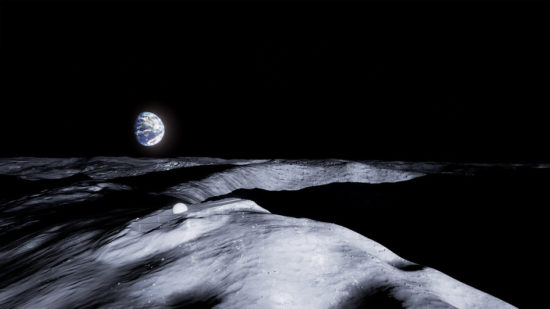
Living on the Moon would be challenging, to say the least. A total of twelve Apollo moon-walkers between 1969 and 1972 spent a cumulative 80 hours walking around on the surface of the moon. Obviously, they had to bring their own food, water, and air to breathe.
NASA engineers did a good job of preparing the Apollo astronauts for what would be a very non-Earth-like experience. But the moon-walkers were there for only one to three days on each of the lunar landing missions, and were focused on getting historic stuff done as quickly as possible before coming home.
Let’s say you were traveling to an existing moon base as a tourist, with enough food, water, and air to spend a month there, and a round-trip ticket to get there and back home. What are some of the differences you would experience living on the Moon compared to Earth?
1) No atmosphere, no weather, no water, no life
One of the most obvious differences with Earth is that the moon has no atmosphere. No atmosphere means no blue sky, no air to breathe, no weather, and no life. Obviously, you could not simply “go outside”; you would have to have a pressurized space suit. And when you did go outside, there would be no trees, lakes, grass… just a barren grey desert with craters, rocks, and rolling hills.

Walking around near the South Pole (a likely choice for a moon base, see below) would be treacherous because with the sun low on the horizon, and no atmosphere-scattered sunlight to help illuminate the landscape, any low spots would be almost totally black — some might look like bottomless holes. Venturing into larger craters would require artificial lighting.
2) Gravity: If you weigh 200 lbs on Earth, on the Moon you only weigh 33 lbs
As the Apollo astronauts found out, walking around with only 1/6 of Earth gravity takes some getting used to. They developed a “bunny hop” method of moving around that seemed to help keep them from falling over. Astronaut Harrison Schmitt (the last man to walk on the moon) compared it to walking on a giant trampoline. Without much gravity, your muscles would weaken and you would have to have a daily exercise plan to keep from becoming a couch potato.
3) Good luck sleeping, daytime on the moon lasts for 2 weeks
The moon takes 29.5 Earth days to rotate, so that means two weeks of daylight followed by two weeks of darkness for almost everywhere on the moon. To avoid the problem of a moon base being plunged into darkness for 14 days at a time, with temperatures falling to 280 deg. F below zero, a moon base would probably be located near the South Pole, where there are locations that are almost always sunlit, and temperatures remain more moderate. If that is where you spent your month, the sun would hug the horizon, and it would circle around you during your 1-month stay. You would probably still use a 24-hour (Earth time) clock to maintain a healthy circadian rhythm.
4) The day-night temperature range is over 450 deg. F
Because the lunar surface is relatively dark (about the same reflectivity as the open ocean), and because there are no clouds or weather to cool the surface, daytime temperatures soar to 250 deg. F at the lunar equator. The six Apollo missions were planned so that the sun would not be very high in the sky to limit how hot the astronauts and lunar module would get.
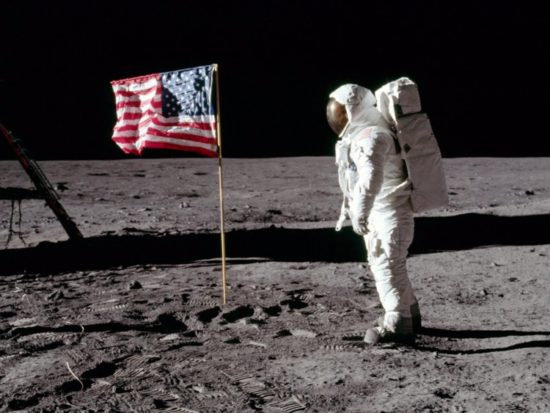
Just as dangerous is the fall of lunar temperatures to -208 deg. F at during the two-week long lunar night. This is probably too large of a temperature range for humans to cope with in terms of heating and cooling of buildings and spacesuits, which is partly why many believe a weakly sunlit site near the South Pole would make the best place for a permanent lunar outpost. Temperatures at the South Pole on solar-illuminated crater ridges hover around 32 deg. F (0 deg. C), and the sun shines for over 90% of the year at some higher elevation locations:
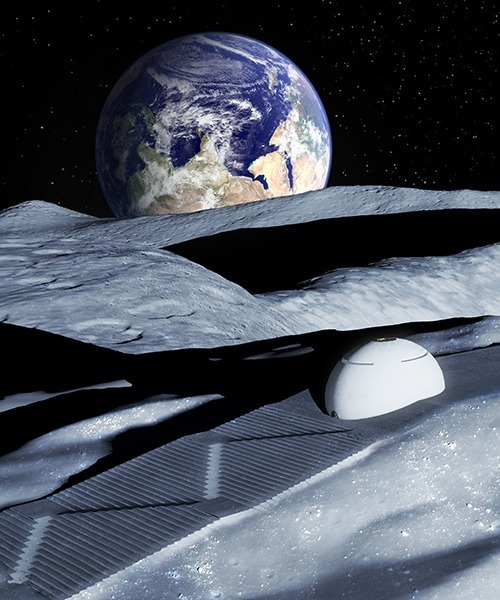
5) The lunar sky is always black, with almost no daytime stars
With no atmosphere, the sky would always appear black, even when the sun is shining. But because the sun shining on the moon surface produces considerable light, all but the brightest stars would not be visible during the daytime. It’s the same reason you cannot see stars next to the full moon.
The Apollo moonwalkers generally did not see stars, and neither do astronauts on the International Space Station when they are on the sunlit side of the Earth. Gene Cernan (Apollo 17) said he could see a few stars if he stood in the shadow of the Lunar Module to reduce the amount of sunlight being reflected from the lunar surface.
At night, though, the stars would be spectacular. I suspect at the South Pole, many more stars would be visible since the landscape would be only weakly illuminated by the sun, and your eyes would adapt to the twilight-like brightness.
6) The view of Earth would be amazing
Since the Earth is 3.7 times larger than the moon, it covers over 15 times as much of the sky as does the moon. This combined with the fact that the Earth is colorful would make the Earth a spectacular sight. A person with reasonably good eyesight would be able to identify the continents. You can get a good idea of the dramatic difference between how the Earth and moon look from this DSCOVR satellite image of the moon transiting the Earth:
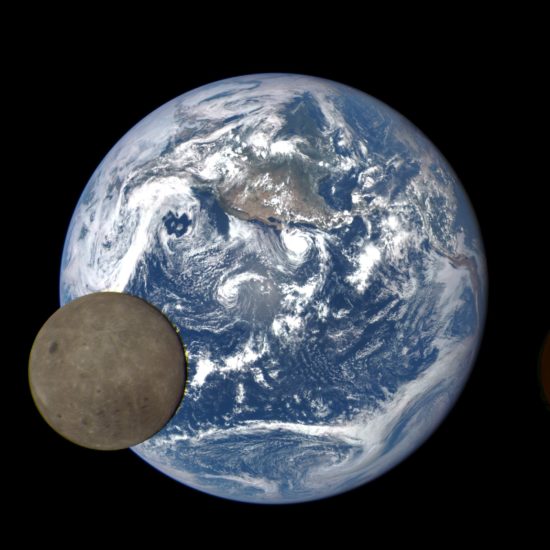
The appearance of the Earth rising above the moon’s limb as Apollo-11 orbited the moon was greeted with amazement by the astronauts as they scrambled to change from black & white to color film to capture the sight.
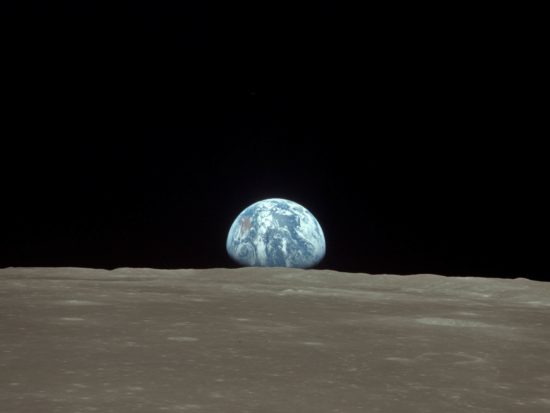
Furthermore, since the Earth rotates over 24 hours, you would get to see different sides of the Earth, rather than just one side of the moon we are limited to here on Earth. There would be phases of illumination throughout the month, just like we see of the moon, but they would be reversed. A “full Earth” would occur during the “new moon” on Earth, while a “new Earth” from the moon would occur during the “full moon” here on Earth. Also, when there is a lunar eclipse on the Earth there would be a solar eclipse on the moon, and when there is a solar eclipse on the Earth, there would be an “Earth eclipse”, with the shadow of the moon falling on a portion of the Earth:
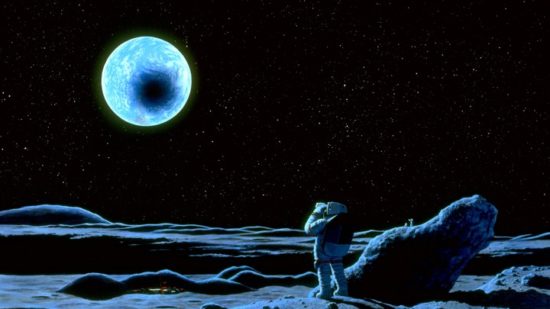
7) The Earth is always in the same part of the lunar sky
Because the same side of the Moon always faces the Earth, the Earth’s position in the lunar sky would always remain the same (or nearly so) as seen from the moon’s surface. There would be no Earthrise or Earthset the way we have moonrise and moonset. If you were near the moon’s South Pole (where sunlit locations stay relatively cool) the Earth would dramatically hang just above the horizon in one spot, while the sun slowly travels around the horizon over the course of one month. This would make the whole Earth viewing experience even more breathtaking.
8) Meteors : Bring your Kevlar vest
The moon is constantly being bombarded by tiny micrometeors. Rarely, one large enough to be seen from Earth hits the moon, such as this one captured by accident by an astrophotographer while photographing the lunar eclipse on January 20, 2019:
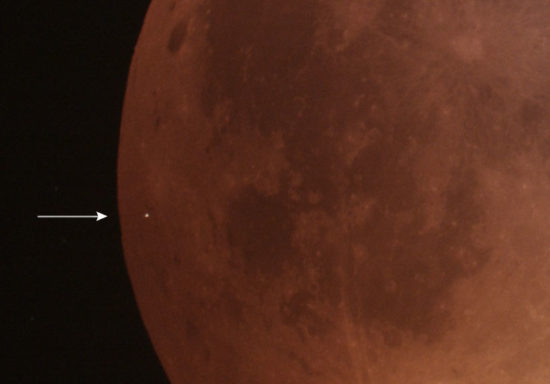
Without an atmosphere to slow the meteors down and burn up all but the largest of them, they hit the moon surface at astonishing speeds. For comparison, a bullet fired by a 30 caliber rifle travels close to 2,000 mph as it leaves the muzzle. Now imagine a small meteor travelling at 45,000 to 196,000 mph. A BB-sized meteor travelling at 100,000 mph would hit your space suit with the energy of 90 30 caliber rifle bullets slugs fired at point-blank range. All of that energy would be concentrated like a knife point in the tiny BB-size spot. Luckily, the probability of being hit by a meteor of even that small size is believed to be vanishingly low. But the possibility would always be in the back of your mind. The moon-walkers (like space-walkers) wore suits with protection against very tiny micrometeors; they just had to hope there weren’t any larger ones with their name on it.
9) Smelly, messy moon dust
The Apollo moon-walkers found that the lunar soil tended to cling to everything, and it has an odor somewhat like gunpowder or wet sand. Very fine and abrasive (like tiny shards of glass), it would probably present a long-term health risk in the pressurized buildings of a lunar base, and much effort would go into cleaning it off of space suits and equipment brought in from outside and filtering it from the air.
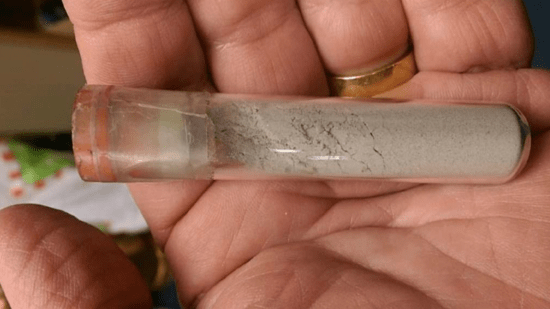
I’m sure there are other unusual aspects of living on the moon I haven’t thought of. Just the daily routines of life would be difficult, and much effort would be expended on activities necessary to sustain life: food, recycling of water, waste disposal, oxygen generation and removal of excess carbon dioxide, energy generation and storage, etc. Here I’ve assumed all of that has already been taken care of for your month of leisurely lunar living.

 Home/Blog
Home/Blog



